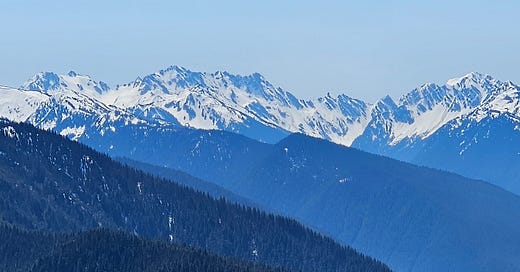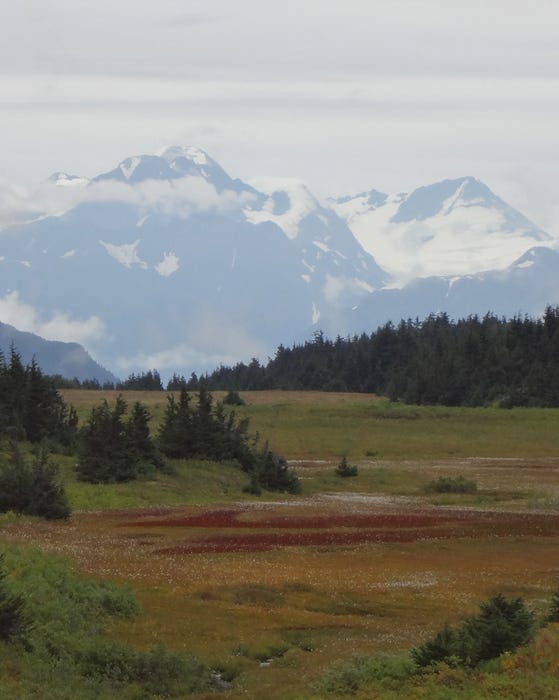T-Mobile & Starlink Will Change Wilderness Experiences
If you can text in the wilderness, is it still wild?
When, in 1846, naturalist David Thoreau tried to climb Mt. Katahdin, he learned that nature is not always “verdant plains and valleys” like those near Walden Pond. Instead, midway up Maine’s tallest mountain, he found himself “deep within the hostile ranks of clouds…a cloud factory” above “an aggregation of loose rocks.” The wind was so strong, he wrote, that it seemed to blow the birds off course.
The experience was an epiphany that caused him to later write that such landscapes attracted “daring and insolent men.”
I would say, rather, that nature in all its wildness attracts men and women willing to test themselves and learn what they are made of, even on a small scale. Uninterrupted nature calls to the adventurous, to come and see, come and learn, come experience something new.
You can find that wonder, and a great sense of perspective, without scaling mountain peaks, of course. Perched on a desert cliff, sheltering from the sun…hiking a mountain meadow filled with wildflowers…pushing deep into a national park or wilderness area where cars cannot go…we experience the sublime and, ultimately, learn more about ourselves and our capabilities.
Will T-Mobile and Starlink change that?
If you haven’t yet heard, T-Mobile inked a deal with Starlink to enable texting, and eventually voice and video calls, from any location that can see the sky. What? Come again?
Yes, in the very near future (the capability is in beta testing now) you can be snowshoeing on Mt. Rainier or enjoying Alpine lakes receive a call asking if you are receiving all the Medicare benefits you’re entitled to. (It seems that’s one of the prime purposes of my phone nowadays – to allow me to hang up on potential scammers.)
Exploring the wilderness, even for a day, is one of the last places to unplug and simply enjoy the moment. For the time you’re unplugged, you are not accountable to anyone but yourself and the people with you.
That disconnectedness is one of the reasons why, in my youth, vacations were often camping or sailing trips. I could truthfully tell the office I couldn’t be reached and whatever occurred in my absence would have to be addressed when I returned. Being untethered from the phone/fax/computer was glorious.
A Safety Backup
My husband enjoys the connectivity. He thrives on knowing what’s going on in the world, and he’s quick to point out that it’s simply safer being connected.
Currently, in there the U.S., there are at least half a million square miles without cell phone coverage. That includes our own property.
I think about this sometimes when we’re hiking. Admittedly, I’m probably more likely to get hurt than he is, but I know that if he did need medical attention, I would be hard-pressed to drag him along a mountain trail for miles to a parking lot before driving more miles to a phone. We would need help. Being able to text family or a ranger station with our location would be an immense relief.
Aside from my own, personal, concerns, our entire region has only intermittent cell phone coverage. There are long stretches of well-travelled county roads that have no or minimal cell phone coverage, despite what the phone carriers’ maps suggest. In those locations, dealing with an emergency means finding a landline.
In the case of a regional disaster – like a tsunami stemming from an earthquake along the Cascadia Subduction Zone, which is increasingly likely – landlines and cell towers will be down. Without satellite cell coverage, people needing help will be on their own indefinitely.
A Good Thing
When I weight the pros and cons of instant communications, whether we’re brush-whacking our own property or are deep in true wilderness, I have to think the ability to phone for help is a good thing.
The ability to send a quick text could have saved countless lives – notably those of mountain climbers, hikers, and others who needed help fast. Ultimately, I’m looking forward to T-Mobile’s new service.
Will it change my own wilderness experience? No…except to reassure me that if something horrible happens, we can at least text someone exactly where we are. We won’t have to wait hours or days for a passing stranger.
As to the nuisance calls, I recently learned how to set up automatic screening to block afterhours callers. It seems it could be handy to ensure quiet time in the wilderness, too. Or, I could simply turn the thing off. I have that power. Either way, I know I won’t have to answer a call in the wilderness from a stranger trying to sell me a Medicare supplement plan…at least not until I set my phone back to its usual routine.
Thanks for reading Where the Asphalt Ends.
What do you think about instant communications “wherever you can see the sky? Is it something you want? How will it affect your outdoor experiences?






